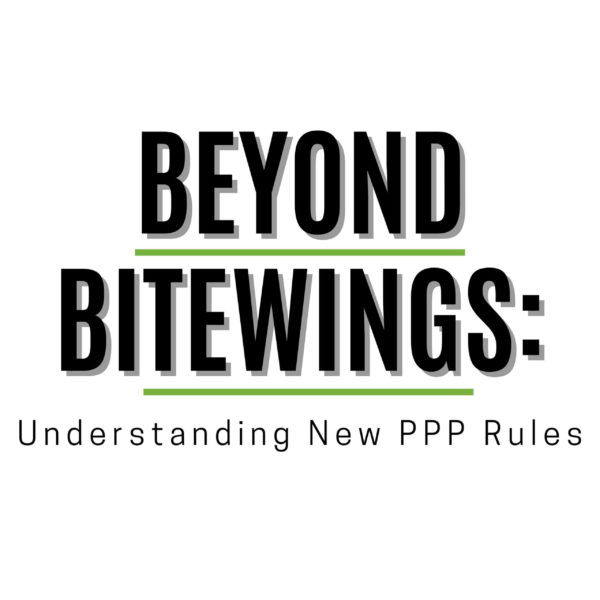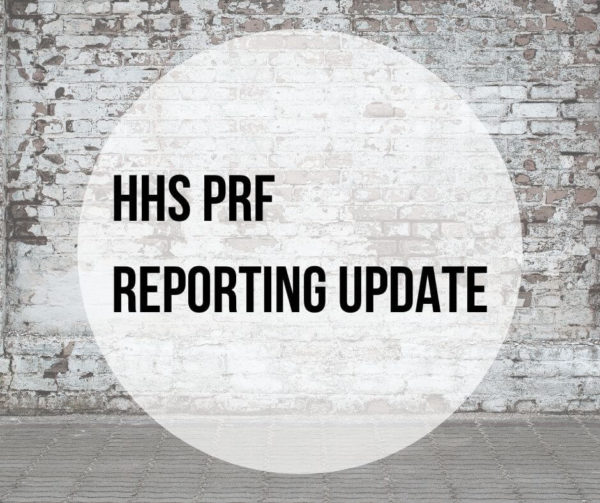06/05/2020 2:46PM
Yesterday the Senate passed the PPP modifications that the House passed last week, now these PPP changes await the final signature. Due to the overwhelming bipartisan support, it is expected that the President will sign the bill into law. The modifications require a new strategy but provide significant opportunity to ensure practices receive 100% forgiveness. Of course, these changes will still require the much-awaited guidance to be issued by the Treasury and SBA. But it does allow us more time to wait for it.
Summary of changes to the PPP loan program:
8-week covered period extended to 24 weeks
Practice tip: The loan was based on 2.5 months, approximately 11 weeks, of payroll, and you now have 24 weeks to spend it. This eliminates most of the challenges of the program and allows most practices to utilize 100% of the PPP money on payroll and ensure total forgiveness.
75% rule reduced to 60%
Previously 75% of PPP proceeds had to be used on payroll or the forgiveness amount would be reduced. But now only 60% of the PPP proceeds must be used on payroll. There’s a caveat though! It’s now all or nothing. If you do not spend 60% of the funds on payroll you will get ZERO forgiveness. This is a drastic change from the previous 75% rule.
Practice tip: Due to the 24-week covered period, this rule should not be a problem. We recommend trying to spend 100% of the loan amount on payroll over the 24 weeks. That will make the application process much easier since you will only need to provide payroll reports to support your forgiveness application.
Rehire date moved from 6/30/20 to 12/31/20
Practice tip: Your practice now has until 12/31/2020 to rehire employees back to the 2/15/2020 level.
Required FTE goal for the rehire exemption is reduced if you are unable to rehire people or business has declined due to HHS, CDC, or OSHA requirements regarding COVID-19
Practice tip: Continue to plan on rehiring people by 12/31/20. However, if guidelines are issued that restrict the number of people allowed in the office, this will give you flexibility in adjusting staffing levels to a new normal. This exception is new, and we will need new guidance to clarify it.
New PPP loans will have a minimum maturity of 5 years
Practice tip: With the extension to 24-weeks, the goal should be 100% forgiveness of the PPP loan. However, if you do not attain this goal, consider contacting your bank to modify the term to 5 years if your loan was finalized under the shorter 2-year term. However, we recommend avoiding this unless truly needed.
Of note regarding changes to the PPP program:
- We still don’t know about
- payments to related parties
- retirement
- miscellaneous other payments…but none of this may matter now.
- The $15,385 per person payroll limit may be increased to $46,154. We recommend limiting the expected forgivable portion to $15,385 per person until we get guidance since the new 24-week period should allow you to utilize all other PPP proceeds on staff payroll.
- The forgiveness application will be completely changed.
- The PPP Expense Tracker tool will be updated.
- Although utilities, health insurance, SUTA, and other small costs are still eligible, they become less important. Rather than worry about tracking small receipts, focus on big items that are easy to provide to the lender—payroll primarily, and rent. This should make the forgiveness application process quick and easy.
- Forgiveness applications won’t be filed until after the end of the year due to the 12/31/2020 rehire date.
- At this time items paid with PPP funds are not deductible expenses. There was previously talk that Congress would revise it so the items would be deductible. However, given the favorable changes to the program passed here, there may be less motivation to do so.
One of our ADCPA colleagues has a great webinar on the changes outlined in this post. Keep in mind, though, they are in Massachusetts where practices were not blessed to reopen as early as states like Texas. Click here to see the recorded webinar.




